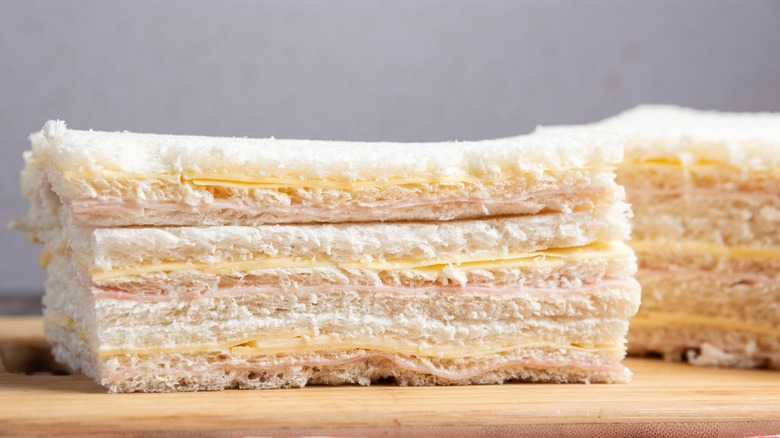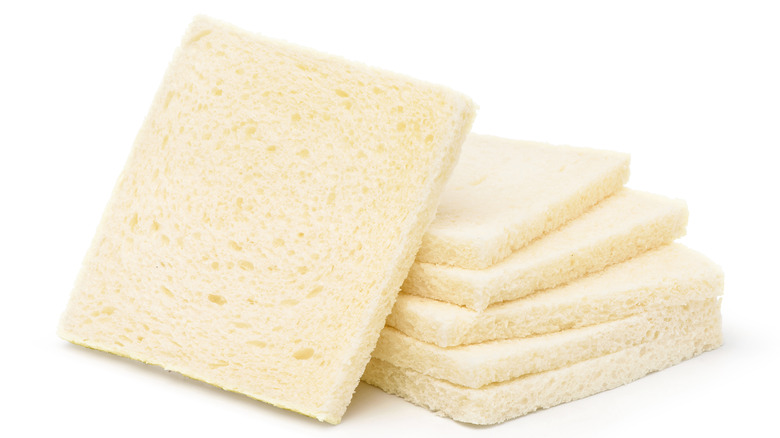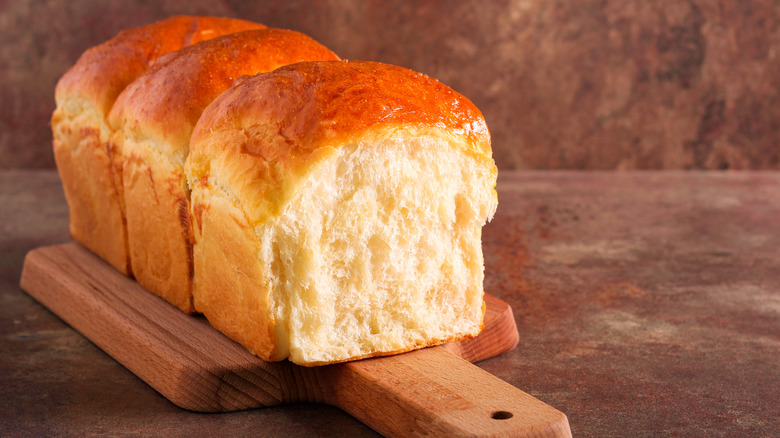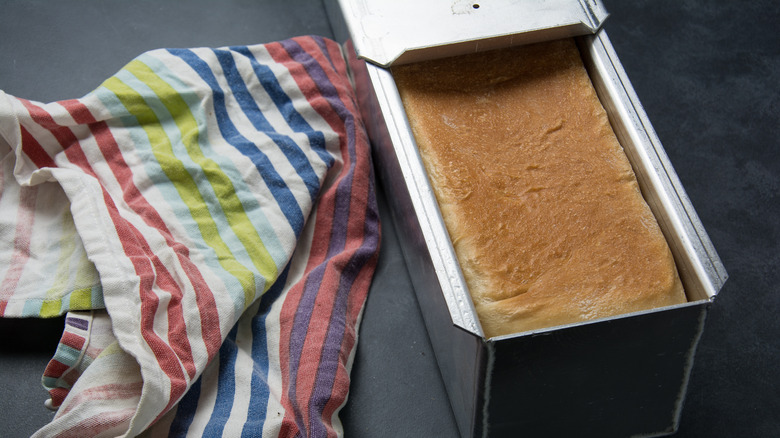What Makes Argentina's Pan De Miga Different From Other Types Of Bread?
If you're craving the unparalleled comfort of a soft, crustless sandwich, there are a few places you can turn to. You could head to a fine tea room, where dainty finger sandwiches are served alongside afternoon or high tea. You could even raid a first-grader's lunchbox and snag a PB&J with the crusts cut off. (Disclaimer: Don't do that.) But if you find yourself in Argentina, your best bet for a proper crustless sandwich is a neighborhood block party.
According to Asado Argentina, sándwich de miga, made up of Argentina's special bread, pan de miga, and select fillings, is peak party fare. Be it a birthday, an anniversary, or a reunion, Argentinian get-togethers don't come complete without a tray of these crustless sandwiches.
Take the Argentinian idiom often dished out to party animals: "Vos tenes más fiesta que un sándwich de miga," or "You go to more parties than a crumb sandwich" (via The Real Argentina). Being compared to a sandwich isn't the worst putdown, but you get their point.
When not satisfying grazing party-goers, The Real Argentina notes that the sándwich de miga is treated as an all-purpose snack, eaten whenever the hunger pangs strike. Unlike other sandwiches, Argentina's favorite sandwich is defined by its choice of bread, not its filling. So, what exactly is pan de miga?
A quick, crustless history of pan de miga
The answer lies in its name. Pan de miga literally means "crumb bread," and the crumb refers to the part of the bread sans crust, i.e., the white, squishy center. Often baked in a long, narrow rectangular loaf pan with a lid (a Pullman loaf pan), the crust is cut off of the baked product, creating perfect squares of all-white sandwich bread. But when did this fervor for crustless bread first kick-off?
According to the magazine Clarín, the pan de miga might have origins in 1900s Buenos Aires at Confitería Ideal, a café known to serve British businessmen. Catering to their homesick clientele, the Argentinian cooks sought to recreate a dupe of Britain's delicate crustless cucumber sandwich.
Other sources, like Amigo Foods, claim it could have been brought to the country by Italian immigrants longing for their own crustless sandwich. Either way, Argentina bakeries were soon serving their version: sándwich de miga.
Pan de miga's bread brothers
Though pan de miga has its own unique recipe, there are two other loaves that share commonalities with this bread. Pain de mie, a French-style white bread, and shokupan, also known as Japanese milk bread, are often baked in a Pullman pan like pan de miga. According to The Perfect Loaf, the lid on the Pullman pan helps create a super-thin crust, meaning a less crunchy exterior to detract from the tender interior.
In addition to their shared equipment, shokupan and pan de miga have a similar pre-proof shaping, with the dough being divided into three or four equal pieces before being placed in the Pullman pan (via Just One Cookbook and Locos par la Comida). While the shokupan pieces are then flattened and rolled into spirals, the miga dough balls are arranged sans spiral in the pan (which helps avoid gaps in the crumb, according to Locos par la Comida).
As for pain de mie, it also shares an etymological link with pan de miga. Leite's Culinaria writes that pain de mie roughly translates into "bread of the crumb." So both loaves are colloquially known as "crumb bread."
A final important link between all three bread types? They're most commonly used to create incredible sandwiches, from the famed Japanese tamago sando (also a crustless staple) to the French croque monsieur.
How to make pan de miga
If you want to bring the magic of pan de miga to your home, check your international food aisles or specialty Hispanic food markets. You can also purchase it online at specialty grocers like Amigo Foods. Or, you can bake it at home.
As you're trying your hand at pan de migas, it's important to keep a few things in mind. The dough is enriched, containing dairy and/or fat, and requires a rather intense kneading, as the tender dough needs a little extra muscle to activate the gluten (via Locos par la Comida). After shaping your loaf, final proof and baking in a Pullman pan are all that stand in your way. Just don't skip that final step: removing the outer crust.
If you want to take a step further to make a proper sándwich de miga, 196 Flavors recommends starting your sandwich with a mayo spread lightened with lime juice. For your filling, you could go simple with ham and cheese or add hard-boiled egg and fresh vegetables, like tomatoes and peppers.
That's the most traditional incarnation of sándwich de miga, but other versions contain tuna, chicken, olives, or even pineapple. 196 Flavors also notes that Argentinians have been known to layer up these sandwiches for maximum flavor, offering double- and triple-decker options.
One bite of this supremely soft and satisfying sandwich, and you'll see what all the fuss is about. Warning: Parties may follow.



